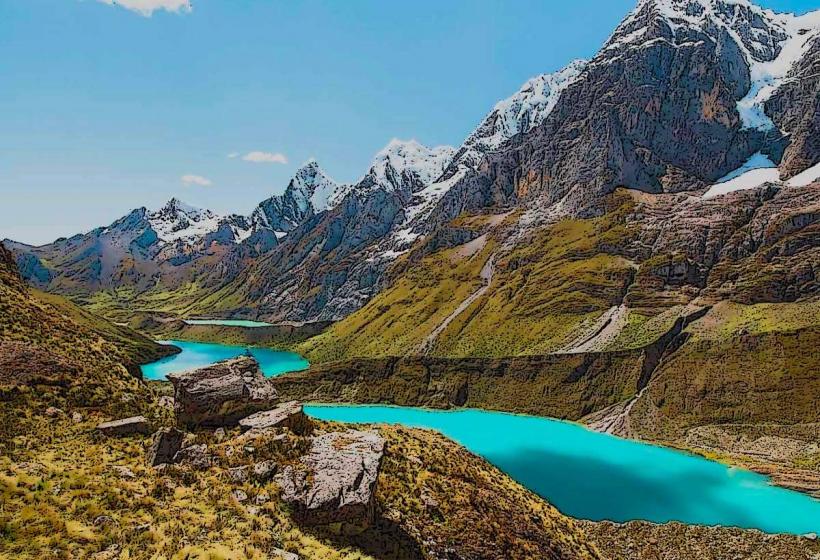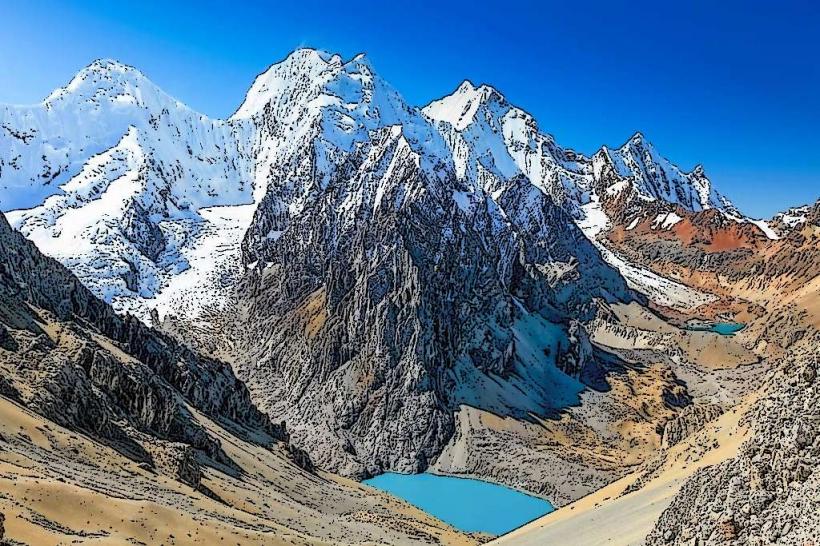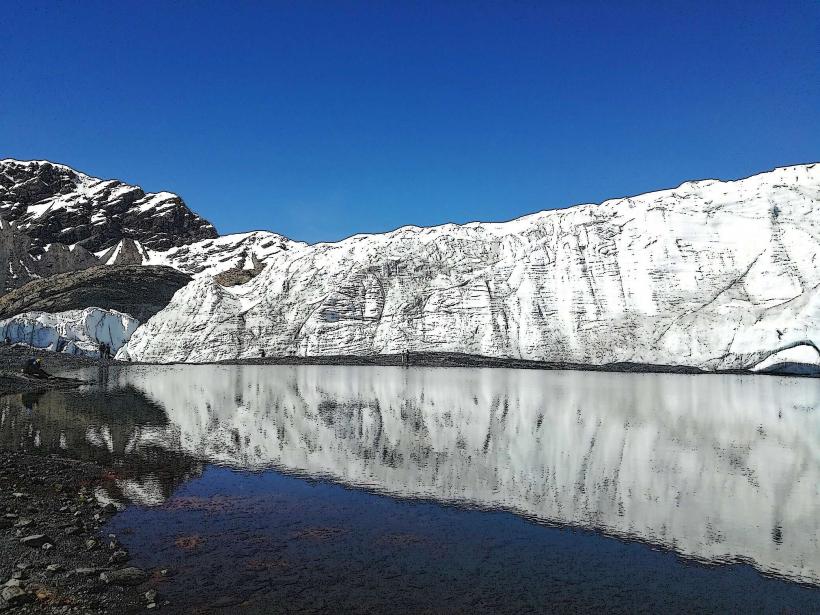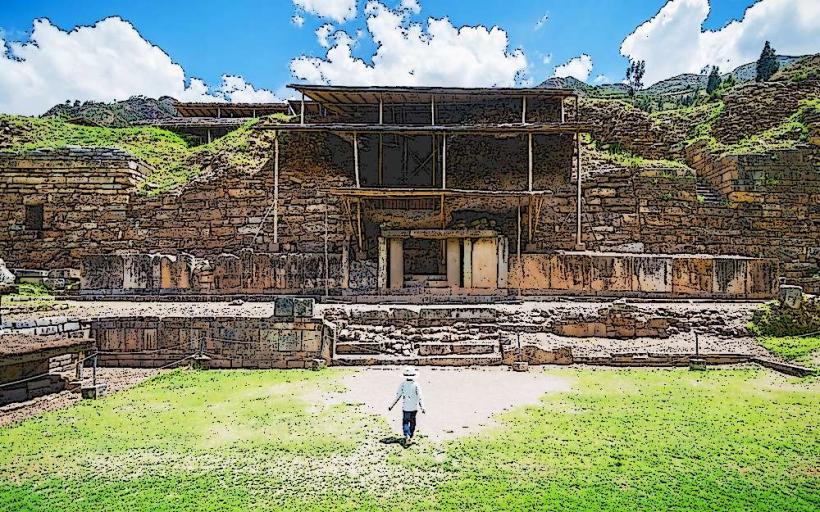Information
City: HuarazCountry: Peru
Continent: South America
Huaraz, Peru, South America
Overview
Oddly enough, Huaraz sits high in Peru’s Andes, cradled by snowcapped peaks, and serves as the capital of the Ancash Region, alternatively huaraz, with snow-capped peaks gleaming in the sun, draws adventure seekers from around the world, especially those eager to climb, trek, or roam the lofty trails of the Andes.People often call it the “Switzerland of Peru” for its breathtaking mountain views-jagged peaks rising above turquoise alpine lakes and shimmering glaciers, subsequently first.Huaraz sits about 400 kilometers (250 miles) north of Lima, high in the Andes at roughly 3,052 meters (10,013 feet), where the air feels crisp and thin; its weather follows a classic mountain pattern, swinging between dazzling, dry days and a rainy season, moreover from May to October, the dry season brings crisp, sunny days and radiant blue skies-perfect for hiking or exploring outdoors.November through April shifts to the rainy season, with heavier afternoon showers that make trekking and climbing less appealing, in addition long before the Incas, the Huaraz region was home to ancient cultures like the Chavín, famed for their intricate stone carvings, striking temples, and deep religious traditions.The Chavín de Huántar site, just outside Huaraz, stands as one of the region’s great heritage treasures, while during the Inca period, Huaraz thrived as a vital hub for farming-potatoes, maize, and quinoa filled its terraces-and for overseeing regional affairs.Its spot near the high mountain passes made it a key location, and after the Spanish conquest, Huaraz stayed quiet for years, its days marked by farms, mining work, and the lowing of cattle.Huascarán National Park, a vast sweep of glacier-capped peaks and high mountain valleys, is a UNESCO World Heritage site and ranks among the largest protected areas in Peru, what’s more huascarán towers over the park, Peru’s highest peak and the fourth tallest in the Americas, rising to 6,768 meters-nearly high enough to touch the thin, icy clouds.Huascarán draws climbers and trekkers alike, with steep, icy routes for seasoned mountaineers and gentler paths lined with rare alpine flowers for beginners, alternatively the park shelters Andean condors gliding on thin air, pumas in shadowed valleys, and deer grazing in the high meadows.Trails wind toward sapphire lakes, ancient glaciers, and secluded valleys framed by jagged, snow-vivid peaks, also about 40 kilometers north of Huaraz lies Chavín de Huántar, one of Peru’s most significant archaeological treasures.It stood at the heart of the Chavín culture, where stone plazas echoed with the sound of ritual drums, moreover from 1000 to 300 BCE, it thrived with intricate stone buildings and temples heavy with the scent of burning incense, slightly often Highlights include ancient temples, stone terraces, narrow tunnels, and intricate carvings you can trace with your fingertips, to boot the Lanzón Monolith, a massive stone carving, stands as one of Chavín’s most iconic treasures, its sharp lines and fanged deity face marking the heart of the culture’s beliefs.The site’s ingenious drainage channels hint at engineers who knew exactly how to tame rushing mountain water, on top of that chavín de Huántar likely drew pilgrims from across the Andes, turning it into a powerful religious hub.It seems, Far above, at 4,600 meters in Huascarán National Park, glacial-blue Laguna 69 shimmers in the thin air, a favorite goal for trekkers, equally important hiking to Laguna 69 takes a full day and tests your legs with steep, rocky trails that wind past shadowy forests, thunderous waterfalls, and wide, wind-swept meadows high in the thin mountain air.At the end, you’re greeted by the brilliant turquoise waters of Laguna 69, framed by towering, snow-draped peaks, moreover the trek itself is moderately challenging, so come ready for thin mountain air and rugged terrain.Pastoruri Glacier, one of the few in the Cordillera Blanca that tourists can still reach, waits like a shimmering sheet of ice on the horizon, and perched 5,240 meters above sea level-where the air feels sharp and thin-it draws crowds of visitors eager to stand beside the glacier without tackling any serious climbs.Curiously, You can join a guided hike up to the glacier, feeling the crunch of gravel under your boots, or take a languid, scenic drive to the viewing point, consequently in parts of the glacier, you can even try ice climbing, your crampons crunching into the frozen wall; yet the ice has been shrinking rapid from climate change, a stark reminder of the region’s environmental struggles, generally Near Huaraz lies the Wilcahuaín Archaeological Site, a hidden gem once used by the Wari culture between 500 and 1000 CE, equally important it’s an ancient funerary complex, a cluster of weathered stone tombs that catch the sun in pale, uneven streaks.Somehow, The site’s stepped terraces, weathered stone buildings, and carefully wrapped mummies offer a vivid glimpse into Wari burial traditions, after that far to the north, the Callejón de Huaylas winds along the Santa River, its valley cradled by towering Andean peaks dusted with snow, a little Curiously, Tucked into the valley are charming towns like Carhuaz, Yungay, and Casma, each with its own traditions and sweeping views of snow-dusted peaks, then you can cruise along winding scenic roads, wander through bustling local markets, step into timeworn villages, and pause to take in the valley’s sweeping views, where the air smells faintly of pine.In May, Huaraz bursts into the Fiesta de las Cruces, filling the streets with solemn processions, dazzling parades, folk dances, and music that honor the crosses of the Christian faith; come October, the city gathers again to celebrate the Virgen del Rosario, its beloved patron saint, as well as the festival brings together church masses, colorful processions, and lively street dancing, where you can hear drums echoing off the walls, more or less The region is also famous for its intricate textiles and handwoven alpaca wool goods, therefore in the local markets, you’ll spot vibrant scarves, soft wool blankets, and clothing that smells faintly of fresh dye.The area’s known for its pottery and silver jewelry, each piece carrying the curves and patterns of age-timeworn designs shaped by skilled hands, then number five glowed faintly on the page, like a slight lantern in the obscure.GastronomyHuaraz serves up a range of Andean dishes, shaped by the rugged highlands and the potatoes, corn, and herbs grown in the region’s fields, also main dishes include cuy chactado-crispy fried guinea pig served with golden potatoes and sweet corn-pachamanca, where lamb, pork, or chicken and vegetables roast slowly in an earth oven over sizzling stones, and caldo de cabeza, a rich soup simmered from lamb or beef head with hearty vegetables; drinks range from chicha de jora, a tangy fermented corn brew poured freely at festival tables, to mate de coca, a soothing coca leaf tea that helps ease the sting of high altitude.
Author: Tourist Landmarks
Date: 2025-10-29
Landmarks in huaraz






